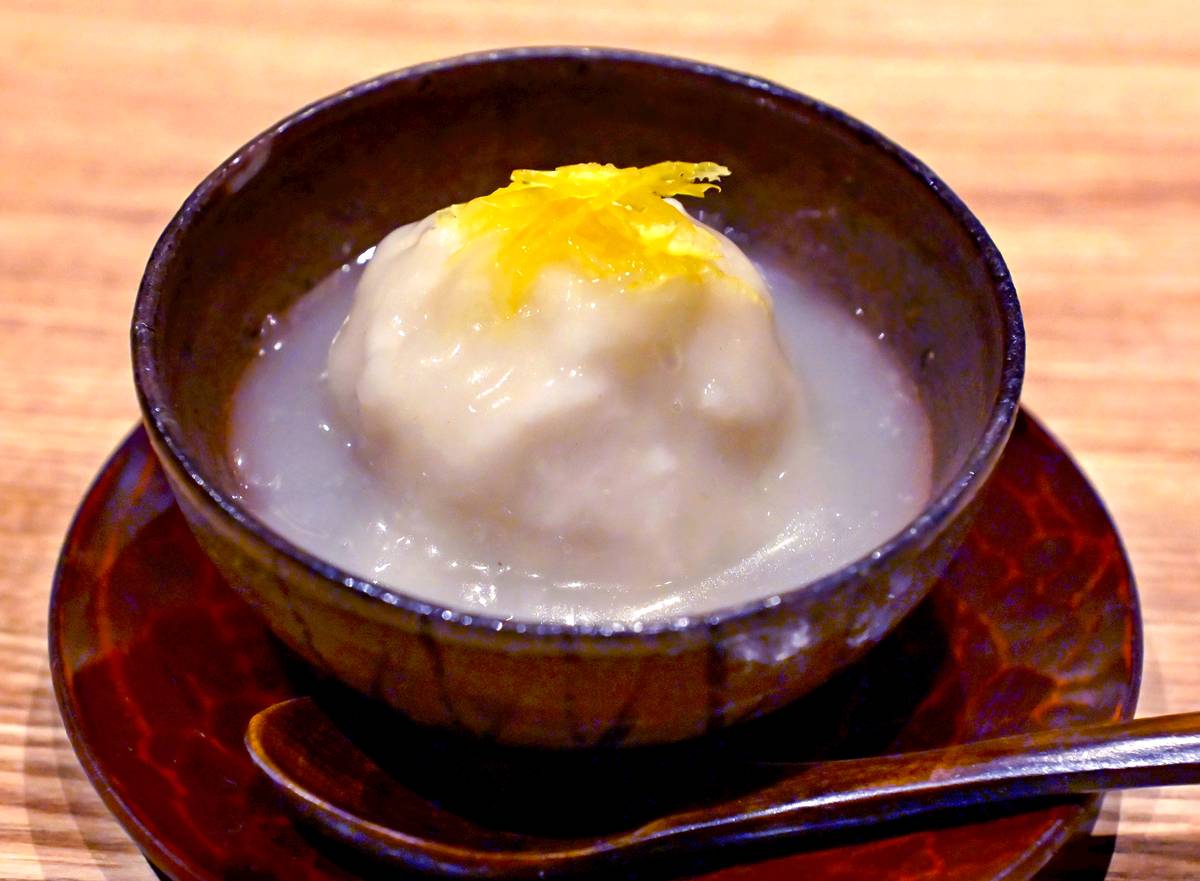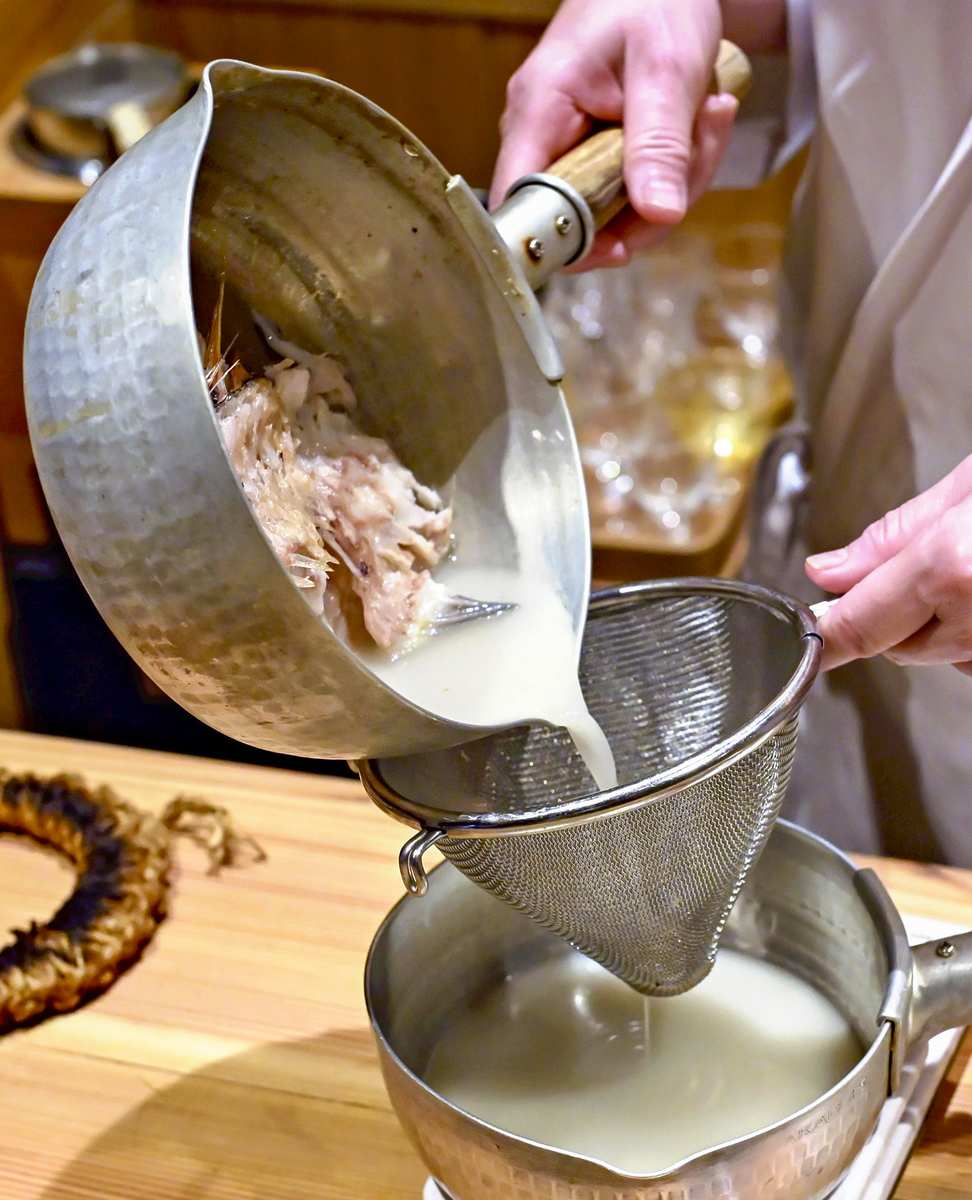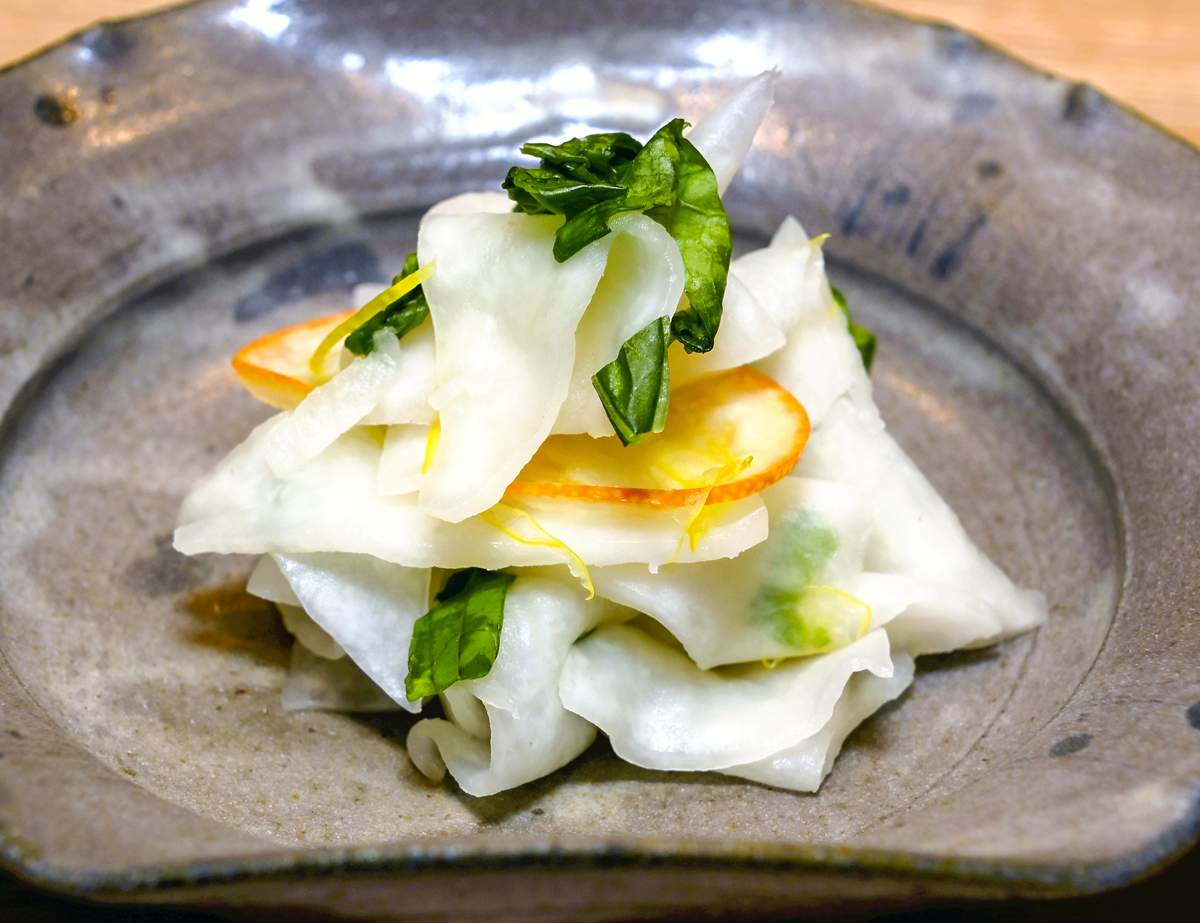Entertain Guests in Winter with Warm Kabura Mushi Steamed Turnip Dish; Traditional Japanese Dish Can Even be Made at Home

Kabura mushi steamed turnip
12:30 JST, February 16, 2025
Kabura mushi steamed turnip is a warm dish that looks delicate and has a mellow taste. It is covered with grated kabura turnip and a thick sauce. Kanako Wakimoto, who runs a traditional Japanese restaurant in Tokyo’s Kamiyacho area, makes the dish look as if it’s wrapped in fluffy snow. Freshly steamed kabura mushi warms the body.
The dish is typically made with white fish and often served as a banquet course, especially in high-end Japanese-style restaurants. Although it may seem too hard for a home-cooked meal, Wakimoto said: “It’s not that difficult. You can make it at home.”
For the recipe, Wakimoto uses amadai tilefish and shogoin turnips. They are rarely found in supermarkets and slightly expensive, but you can use other white-meat fish such as red sea bream or regular turnips in place of them, depending on your budget.

Making dashi soup stock
The fish bones are good for making dashi soup stock, which will be used in the sauce. Wakimoto recommends browning their surface before boiling in water as a worthwhile extra step to enhance the flavor.
“It depends on the size of the fish, but you can get dashi stock with a refined flavor from amadai. Even if the bony parts aren’t available, you can make dashi stock with only bonito flakes and kombu,” she said.
Shogoin turnips are very fibrous at the surface, so peel thickly. Using a fine grater on the vegetable gives it a more airy and refined texture.
Chop the amadai into pieces and place them on a parchment paper-lined tray or plate before placing in a steamer. The meat is less likely to fall apart compared to slicing it after steaming.
The chopsticks cut easily through the freshly cooked dish. The sweetness of the amadai and the shogoin turnip’s refreshing taste are accented the richly flavored sauce.
Wakimoto says she serves this dish as a winter appetizer at her restaurant.
It can also be a treat for entertaining guests at home on a cold day.
***
Sliced sweet pickled turnip

Sweet pickled turnip slices
Amazuzuke is the technique of pickling vegetables in amazu, which is vinegar mixed with sugar. You can make sweet pickled turnip from the leftovers using this method. Thinly slice the turnip and soak in 2% salt water until tender. If you have turnip leaves, soak them together. After removing from the salt water, squeeze out the water and let soak in the amazu at a ratio of 3 parts water, 1 part sugar and 1 part vinegar. Let sit for a while and when it tastes to your liking, remove, squeeze the pickled turnip lightly and serve. You can enjoy its fine texture and sweetness, and it also goes well with yuzu or kumquat slices.
***
Kabura mushi
Ingredients (serves 2):
- 60 grams amadai tilefish plus an adequate amount of bony parts
- 100 grams shogoin turnip or small turnips (peeled)
- 20 grams yurine lily bulb scales
- 3 grams kombu
- 1 gram dried bonito flakes
- Egg white of 1 egg
- Adequate amount of yuzu zest
Directions:
1. Place the bony parts of the amadai in a frying pan and brown over medium heat. Place 500 milliliters of water, kombu, dried bonito flakes and the bony parts in a pan and bring to a boil over high heat while skimming off the scum. Reduce heat to low and simmer for 30 minutes. Put through a soup and stock strainer to create dashi stock.
2. Sprinkle salt lightly on the amadai and cut into six equal pieces. Place on a plate lined with a sheet of parchment paper along with the separated lily bulb scales and put in a steamer for three to four minutes.
3. Pour the egg white in a bowl and beat to stiff peaks. Grate the turnip and squeeze out excess water. Place the grated turnip in a separate bowl, add 5 grams of the beaten egg white and mix lightly.
4. Take two small bowls and place three pieces of amadai and half of the lily bulb scales in each. Place half of the egg white mixture and grated turnip made in step 3 as if wrapping the ingredients. Cover loosely with plastic wrap and steam for 10 minutes.
5. In a small saucepan, heat 150 milliliters of the dashi stock made in step 1 and season to taste with a pinch of salt. Dissolve the 10 grams of potato starch in 10 milliliters of water and add to thicken.
6. Remove the bowls in step 4 from the steamer and pour half of the thick sauce made in step 5 over the steamed dish in each bowl. Top with the yuzu zest.
"Features" POPULAR ARTICLE
-

Sanrio to Open Museum in Yamanashi Pref. Dedicated to Founder, Exhibits Include Hello Kitty, Other Characters
-

Legendary Sushi Chef Jiro Ono Turns 100: ‘I Have No Regrets’
-

Autumn Foliage Surrounds Visitors to Tokyo’s Showa Kinen Park
-

My Daughter No Longer Speaks to Me, But I Want to See Her and My Grandchild
-

Kumamoto: Public Bath Refurbished as Library Where You Can Chat, Take Photos
JN ACCESS RANKING
-

Keidanren Chairman Yoshinobu Tsutsui Visits Kashiwazaki-Kariwa Nuclear Power Plant; Inspects New Emergency Safety System
-

Imports of Rare Earths from China Facing Delays, May Be Caused by Deterioration of Japan-China Relations
-

University of Tokyo Professor Discusses Japanese Economic Security in Interview Ahead of Forum
-

Japan Pulls out of Vietnam Nuclear Project, Complicating Hanoi’s Power Plans
-

Govt Aims to Expand NISA Program Lineup, Abolish Age Restriction


























